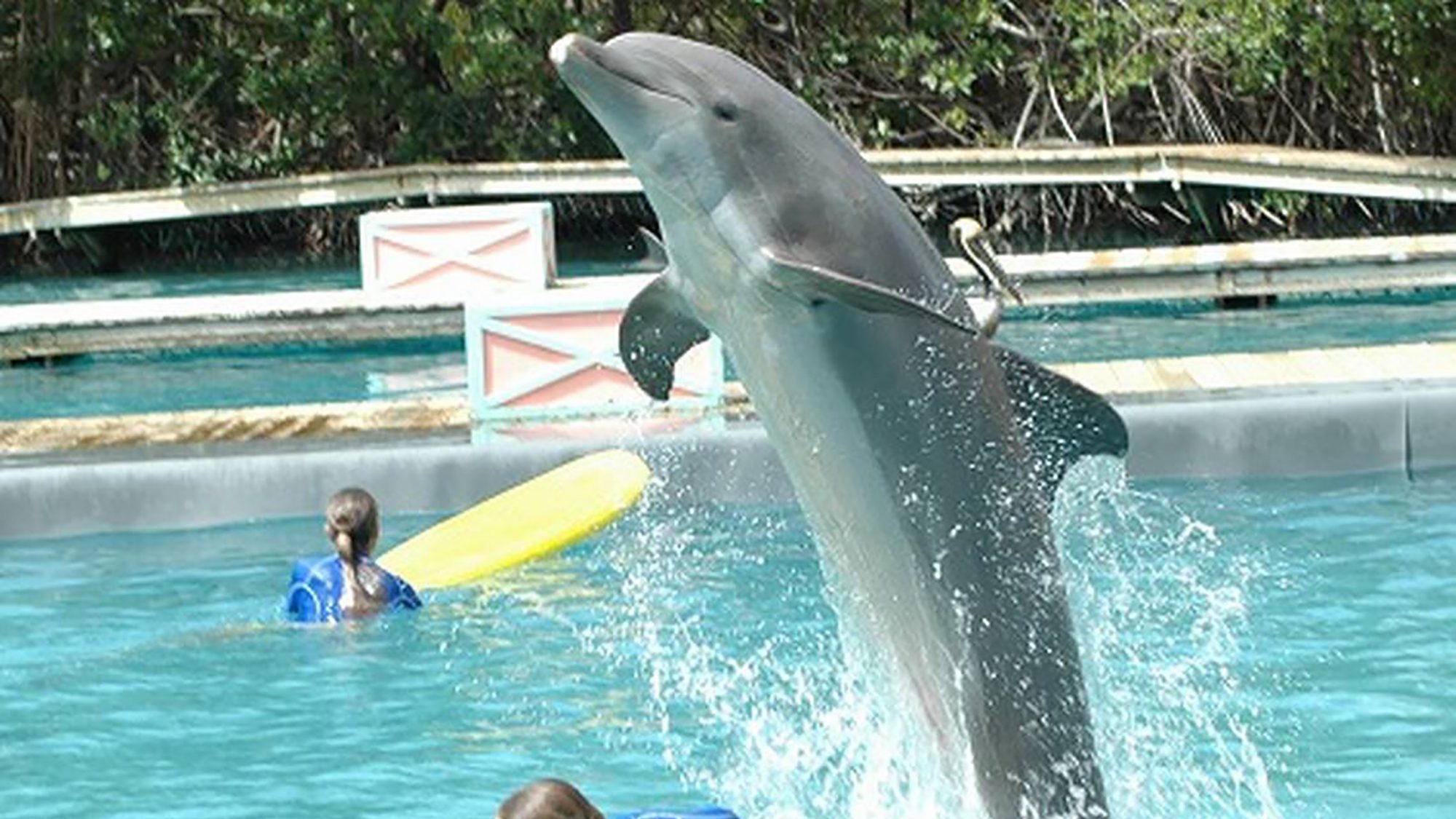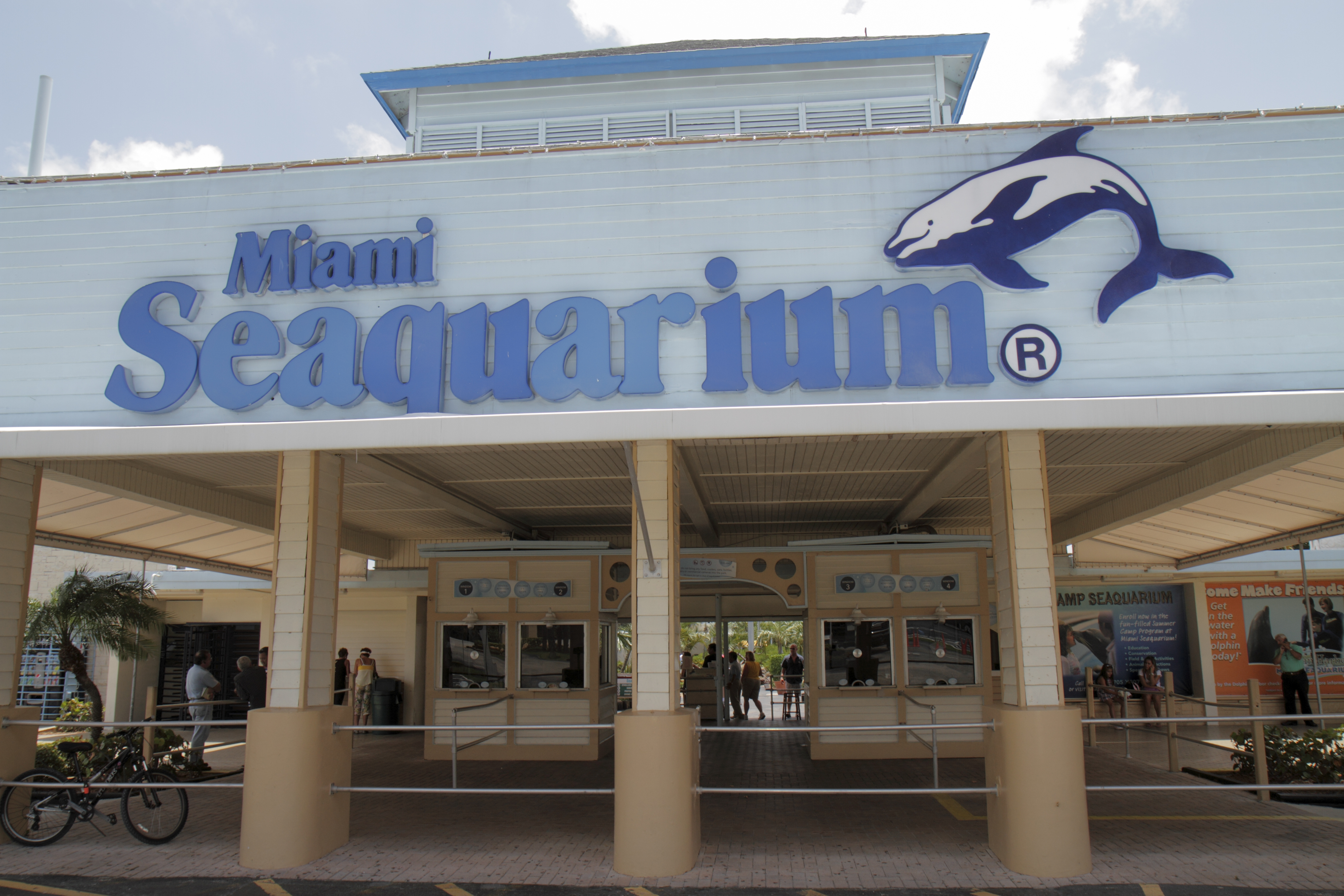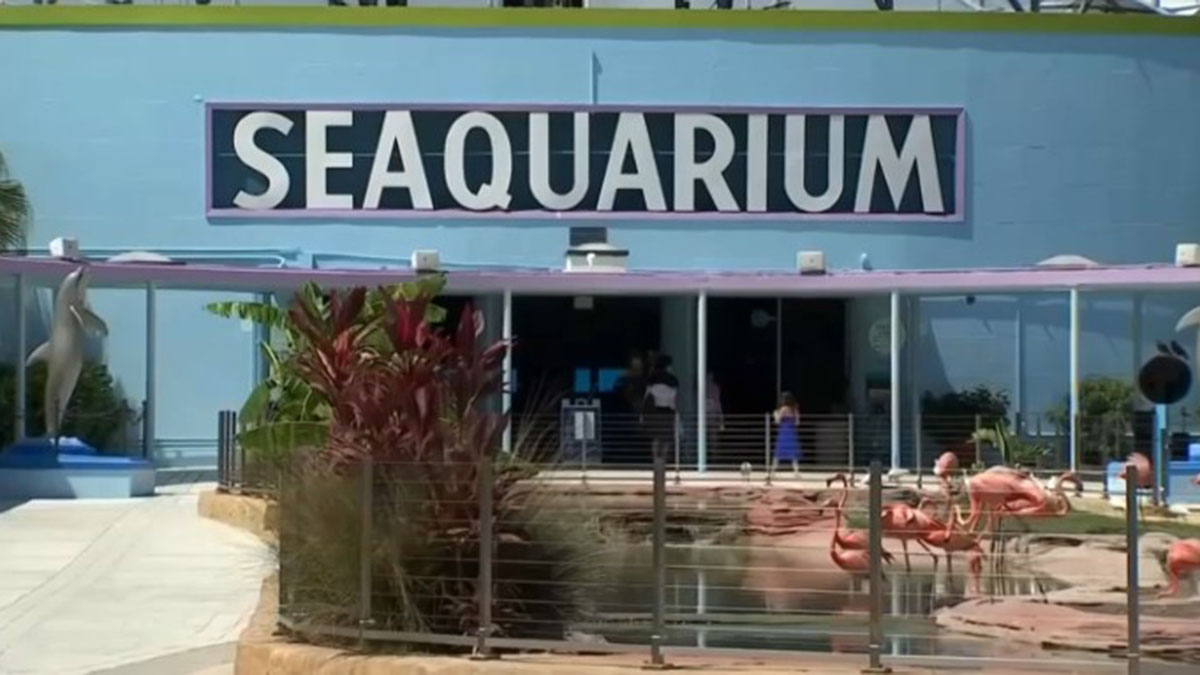The Miami Seaquarium, located on Virginia Key along the Rickenbacker Causeway, has been a Miami staple and popular tourist attraction for almost 70 years. Since it’s opening in 1955, the Seaquarium has been the location of many medical research firsts, unique interactive exhibits and even film sets.
However, the Seaquarium has also been the site of various protests, lawsuits and inspection violations that led to Miami-Dade County deciding to terminate its lease this week.
Here, we walk you through 7 key moments in the Miami Seaquarium’s history.
1. Flipper TV series pilot episode filmed at the Seaquarium (1963)
Get South Florida local news, weather forecasts and entertainment stories to your inbox. Sign up for NBC South Florida newsletters.
In addition to doing live shows at the Seaquarium, Flipper was the star of his own network TV show. Filmmaker Ivan Tors shot the pilot episode for the television series "Flipper" at the Miami Seaquarium in 1963. The series, which ran on NBC until 1967, employed seven dolphins to play the lead role with co-stars Luke Halpin, Brian Kelly and Tommy Norden.
The popular show told the story of Porter Ricks, a Park Ranger at the fictional Coral Key Park and Marine Preserve, his two sons Sand and Bud, and their pet dolphin, Flipper.
The Miami Seaquarium served as a filming location for many other movies, including scenes from “Salty and the Lion” (1967), “Smokey and the Bandit Part 3” (1983) and “Striptease” (1996).
2. Killer whale Lolita brought to Miami Seaquarium (1970)
Captured off the Pacific Northwest in 1970, Tokitae, a female orca renamed Lolita, was sold to the Miami Seaquarium by Ted Griffiths and Don Goldsberry, partners in a capture operation at the time known as Namu, Inc.
Since bringing her to the Seaquarium, several conservationist groups raised concerns regarding her small tank, held protests calling for her release and took legal action. Efforts to save the whale can be traced back to the release of the 1993 film “Free Willy,” when executive producer Richard Donner used the film’s popularity to bring attention to Lolita’s story.
For 30 years, activists stood in several Miami hotspots, from Miami International Airport to the sidewalks in front of the Seaquarium, dressed as orcas, holding signs and even approaching potential visitors to demand Lolita’s release.
3. First neurological surgery performed on a manatee (1999)
A team of doctors and veterinarians performed neurosurgery on an injured manatee at the Miami Seaquarium, marking the first time a neurosurgical procedure was performed on an endangered marine mammal.
Nash, a 9-year-old male, was rescued on July 16, 1999, after a collision with a boat in the Fort Lauderdale area. The boat sliced off 25 pounds of skin from Nash’s backbone, which was also fractured in the accident.
Gregory Bossart, a Miami Seaquarium veterinarian and associate professor at the University of Miami, along with neurosurgeons James Guest and Eric Belanger, performed the five-hour surgery using the same rod-and-pin system used to repair human spinal cord injuries.
Although doctors hoped Nash would recover, they expected him to remain partially paralyzed. On Aug. 16, 1999, a month after the surgery, Nash died from complications. At the time, less than 3,000 manatees were left in the wild.
4. Lolita listed under the federal Endangered Species Act (2015)
In February 2015, the National Marine Fisheries Service announced that Lolita would be listed as endangered under the Endangered Species Act (ESA).
The ESA provides guidelines to conserve and protect endangered and threatened species and their habitats. By listing her under the act, Lolita was given the same status as the rest of the Southern Resident orcas, her family in the wild.
The decision came after a petition by national nonprofits Animal Legal Defense Fund, PETA, Orca Network and others. Activists hoped that the decision would prompt the retirement of Lolita’s performances and eventual release back into the wild.
In June 2015, a lawsuit challenged the Miami-Dade Police Department’s “red zone” policy, which restricted protesters’ access to a stretch of over 40 feet of sidewalk outside the entrance to the Seaquarium. A settlement was reached and the policy was rescinded.
5. Seaquarium is sold to The Dolphin Company (2022)
The Dolphin Company took control of the Miami Seaquarium after acquiring it from Palace Entertainment, who had bought it in 2014.
The Dolphin Company is the largest park operator in Latin America and it initially received the support of local authorities. The Seaquarium has been operating on a lease of government-owned land for almost 70 years.
The lease was assigned to Dolphin Company’s Florida subsidiary in 2022, with county approval and praise for the company, “a large, experienced, animal-welfare focused, and well-established aquatic park, habitat, and marina operator that is aligned with the County’s goals and objectives of conservation and education.”
6. Miami-Dade Mayor responds to Seaquarium violations (2022)
In 2021, a USDA inspection report revealed code violations in areas including the handling of animals, facilities and water quality. A year later, another inspection report was released, detailing more violations including the fact that diets for nine out of 12 dolphins at Dolphin Harbor were cut by 60%. Aggressive incidents from the dolphins towards visitors and trainers were also included in the report.
In response to the 2022 report, Miami-Dade County Mayor Daniella Levine Cava released a memo to the Board of County Commissioners saying that she was “deeply disturbed by the findings of the recent USDA report regarding our marine life at Miami Seaquarium.”
Following her response, the Director of the Parks, Recreation and Open Spaces Department released a memo listing the steps their department was taking to address the concerns in the report, including inspections in addition to inspections performed by the USDA.
7. Lolita dies at the Seaquarium (2023)
On Friday, August 19th, 2023, Lolita died.
Prior to her passing, the Seaquarium announced that she was showing serious signs of discomfort and was being treated by a medical team.
In March, the Seaquarium announced that a team would begin the work to relocate Lolita back to her home in the Pacific Northwest in the next 18-24 months, only a few weeks after ending her performances. The orca died before she could be relocated.
A year after her death, the Miami Seaquarium is being evicted from the property. Mayor Levine-Cava sent a lease termination notice to Eduardo Albor, the president of The Dolphin Company. In the notice, the company was given until April 21st to vacate the property.
If the Seaquarium owners don't comply, it could lead to a legal eviction process.




